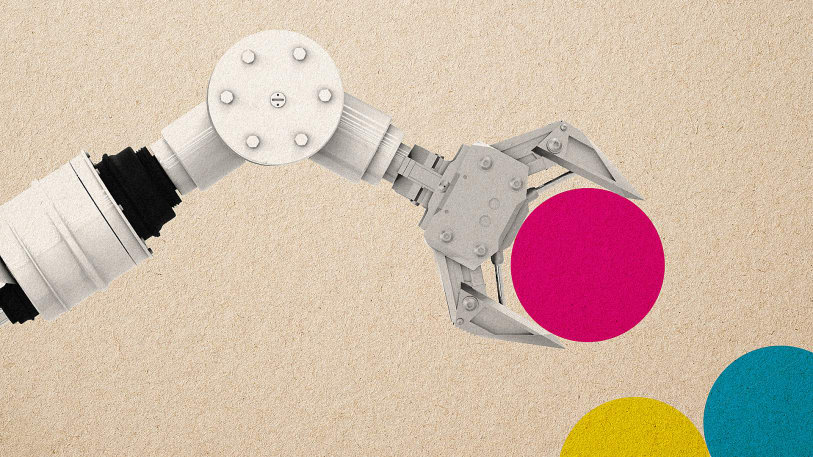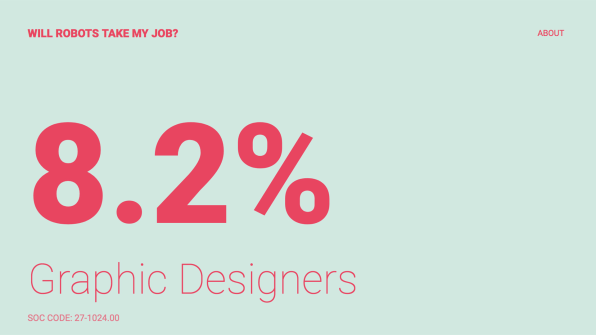By Meg Miller, CO.DESIGN
A designer and developer translated the findings of a new study on job automation into a handy data viz. (Luckily, their careers are safe.)

[Source Images: PhonlamaiPhoto/iStock (photo)]
As robots get more and more advanced, the panicked sci-fi claim “the robots are coming for your job!” seems less hyperbolic by the day. According to a 2013 study by Carl Benedikt Frey and Michael A. Osborne, two researchers at University of Oxford, the robots are indeed coming—specifically, for about 47% of jobs in the U.S.
The academic paper, titled The Future of Employment: How susceptible are jobs to computerisation?, is a bit dense, but thanks to an interactive website built by Mubashar Iqbar and designed by Dimitar Raykov, the results are now easy to explore. The site simplifies the gist of the paper and allows users to search for their occupation to answer the pressing question: Will robots take my job?
According to the site, for most designers the answer is probably not. For graphic designers, the risk of losing their job to automation (8.2%) is low relative to other professions, and architects have a much lower risk (1.8%). Interior designers (2.2%), floral designers (4.7%), fashion designers (2.1%), and landscape architects (4.5%) join graphic designers and architect in the “totally safe” risk category. Urban and regional planner (13%) and software engineer (13%) are the only design jobs listed that climb to double digits, though they still land in the “no worries” category.

[Image: Will Robots Take My Job?]
Those percentages were calculated by Frey, a fellow at the University’s Programme on Technology & Employement and Osborne, an associate professor of machine learning, using both statistics of the historical impacts of automation as well as a machine learning process that predicts how those figures will evolve with technological advancements in the future.
They used o∗net as their resource for the former; an online service developed for the U.S. Department of Labor, o∗net shows data on occupational work activities from 2010 (the most recent report available). The researchers then classified 70 of the 702 occupations by hand, determining a job to be susceptible to automation (classification 1) only if each task listed next to the occupation on o∗net could be automated. Otherwise, it received a classification of 0. The authors then came up with a predictive algorithm that also took the rate of advancements in technology into consideration to determine the probability of the job being automated in the future. (The algorithm is explained in full in the paper.) From there, Iqbar and Raykov simply took the results of the study and presented them in a more accessible manner, with a website that allows users to search for a job or pull up a randomized example. They also aggregated additional information from the U.S. Bureau of Statistics to display the number of jobs and the average salary, alongside a description of the jobs.
Thanks to their clear design, it’s now easy to see that software developers—those who “research, design, develop, and test operating systems-level software,” according to the site—only have a 13% risk of being replaced by robots. Meanwhile, computer programmers—those who “create, modify, and test the code, forms, and script that allow computer applications to run”—have a 48% chance of their job being automated (risk level: “very worrying”).
The big takeaway? The paper’s authors conclude that as technology races ahead, low-skill workers will reallocate to tasks that are non-susceptible to computerization tasks—tasks requiring creative and social intelligence. “For workers to win the race…they will have to acquire creative and social skills.”
Visit the site here to see whether you should start acquiring those skills now.
Meg Miller is an associate editor at Co.Design covering art, technology, and design.




